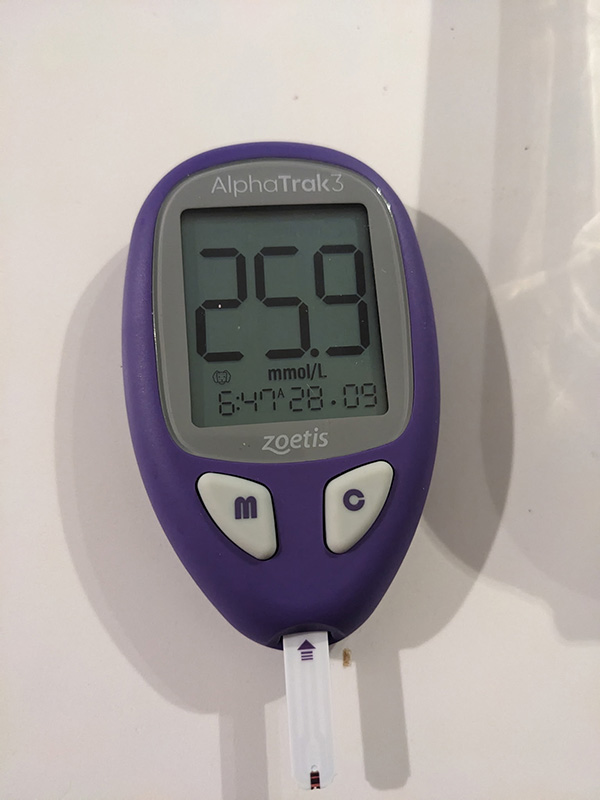September 8, 2025
5 minutes
Rob Hyams
September 8, 2025
5 minutes

Ever since our Border Terrier Parker became diabetic, we’ve had times when we’ve made minor changes in his insulin dose. We would expect almost immediate changes in his energy, appetite, and blood sugar readings. But that didn’t always happen. We learned that it’s completely normal for it to take a few days for your pet’s body to adapt.
Insulin directly affects how your pet’s body processes glucose. If your pet has been living with high or low blood sugar for a while, their body can actually become “used” to those levels. When insulin changes, the liver, muscles, and other tissues need time to re-learn how to manage the new glucose levels.
When you change the insulin dose, the timing and peak effect can also shift. It often takes a few days of monitoring to see the new blood sugar pattern and understand how your pet responds. We noticed this with Parker, particularly if we went up by half a unit.
Meal timing, activity level, stress, hydration, and even mild illness can all influence how quickly you see results after a dose change. When Parker was recovering from surgery, spending less time outside due to excessive heat or humidity or cold temps, we would adapt more slowly.

Be patient for 3–7 days before considering another insulin adjustment, unless your pet shows dangerous symptoms.
Track your pet’s appetite, energy, and behaviour, along with any home glucose readings if your vet has you monitoring. We often perform a curve after a dosage change.
Run a glucose curve after a few days on the new dose to check its effectiveness. If you can't do it yourself, schedule one with your vet.
If your pet shows any of these symptoms, it could indicate hypoglycemia (dangerously low blood sugar) and requires immediate veterinary attention:
Yes — after an insulin adjustment, most diabetic pets need a few days to fully adapt. Patience, consistent monitoring, and close communication with your vet are the keys to keeping your furry friend safe and healthy.

We’re a couple of pet owners who’ve learned firsthand what it takes to care for a diabetic dog. When our own dog, Parker, was diagnosed, we were overwhelmed, so we built this site to make things a little clearer for others starting out. Everything here is designed to help you understand, plan, and feel more confident managing your dog’s diabetes.
September 8, 2025
5 minutes
September 26, 2025
8 minutes